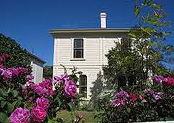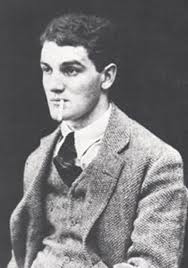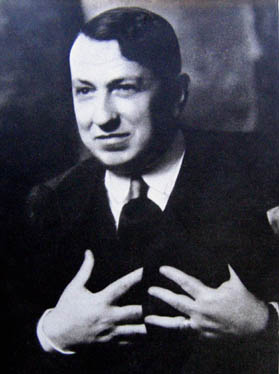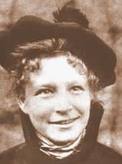|
which he had been writing
at Higher Tregerthen, when Katherine had been literally next door.
Lawrence would have seen a number of similarities between his intended
heroine, Alvina, and his Higher Tregerthen neighbour, Katherine.
Both were daughters of prominent businessmen. Both had rebelled
against their bourgeois backgrounds, and thus become outcasts. More
immediately, he had observed at first hand Katherine's struggles
to free herself of dependence on John Middleton-Murry - a matter
which much concerned Lawrence at that time.
Significantly, a number of events in the novel also mirror events
in Katherine's life. Katherine Mansfield, nee Beauchamp8, was born
into an upper-middle-class New Zealand family in 1888. In 1903 her
wealthy, anglophile parents sent her to London to complete her education.
She enrolled (as Ottoline had before her)9 at Queens College, where
she was inculcated with proto-feminist ideals, which, when she returned
home in 1906, led her to rebel against the bourgeois society of
her parents' provincial Wellington.
|

Katherine
Mansfield's family home in Weloington
|
However, in 1908, fed
up with the antipodes, she prevailed on her parents to send her
back to London, where she again took up residence at Queens College.
In August that year she fell in love with a musician, Garnet Trowell.
She ran off with Trowell and became pregnant by him, then hastily
married another man, George Bowden, before fleeing to Germany, where
she suffered a miscarriage.
On her return to London she lived as a single woman, experimenting
with relationships and attempting to pursue a literary career. She
had some early, promising short stories published which displayed
a talent which was to burgeon a few years later with the publication
of "The Garden Party", "Prelude" and other highly-regarded
short stories. She also acted in early films, her enigmatic, sphinx-like
beauty appealing to directors. Then in 1912 she met John Midleton-Murry,
and they become lovers.
That same, tumultuous year, Lawrence, who had run off with Frieda
Weekley (or visa-versa), had begun
Frieda
writing the first draft
of what eventually became The Lost Girl. He first called it "Scargill
Street", then "Elsa Culverwell", and 28 pages of
this early draft survive10. By early March 1913 he had renamed the
work "The Insurrection of Alvina Houghton" and it was
apparently half-written. However, Lawrence was worried about what
he saw as its overt sexual references, and did not want it to jeopardise
his new autobiographical novel, Sons and Lovers. He stopped writing
the "Alvina" text and a few months later took the manuscript
with him to Bavaria, where he left it with Frieda's family. The
text remained there until after the end of the War.
A few months later, having put "The Insurrection of Alvina
Houghton" aside, and living in Italy with Frieda and revising
proofs of Sons and Lovers, Lawrence received a letter from
Katherine, whom at that time he did not know.

John
Middleton Murry
|
She was working with
Murry on a literary journal, Rhythm, and looking for contributions
from promising young
|
|
writers. Lawrence offered
a short story - free. This led to Lawrence calling in to the office
of what had been renamed The Blue Review on his return to London
a few months later. An immediate friendship was struck up.
Both of them were, in effect, foreigners to the London literary
scene (then dominated by Georgian locals). Yet they shared a number
of things in common. She was a colonial outsider; he was from a
working class mining town. Katherine later acknowledged: "I
am more like Lawrence than anybody. We are unthinkably alike, in
fact."11
Soon Lawrence and Frieda and Katherine and Murry were inseparable.
That idyllic summer of 1913 the two couples saw a lot of each other,
before they all escaped to the continent again in the autumn. The
following spring, however, the foursome were back in London, and
refreshing their friendship. A regular matter they talked about
was Lawrence's evolving dream to exit England and establish a community
of like-minded souls - his "Rananim" - in America, or
the South Seas, or almost anywhere other than the British Isles.
Needless to say, Katherine's colonial prejudices lay in a very different
direction: "I felt very antagonistic to the whole affair,"
she noted in her Journal.12
World War, however, was soon upon them, and the clouds began to
gather. An incident at Christmas 1914 provided Lawrence with the
opportunity to portray Katherine in a lighter context. The foursome
were staying at Gilbert Cannan's windmill cottage in Buckinghamshire
when someone suggested putting on an improvised play. Things got
out of hand - the gathering was so inebriated that they were unable
to carve the Christmas pork - and the play descended towards a bacchanalia,
with Katherine flirting outrageously with Gertler. This incident
gave Lawrence the episode in Women in Love where Gudrun goes
off with the artist Loerke.
Another significant incident occurred that evening. Katherine had
been flirting with the idea of leaving Murry and going off to Paris
to join a French-Corsican poet, Francis Carco.
 Francis
Carco
Francis
Carco |
Lawrence had been encouraging
her to do so, assuring her that the swarthy Carco would prove to
be a more virile lover than Murry. Katherine in fact carried out
her intention, and rendezvoused with her poet friend in Paris. However,
she soon returned to Murry, somewhat to Lawrence's disgust. (An
echo of this was to surface later in The Lost Girl.)
The Lawrence-Murry friendship sailed serenely on through 1915, particularly
after Lawrence, Katherine and Murry became involved with the Bloomsburies,
and went on to sample the attractions and divertissements of Lady
Ottoline Morrell's Arcadian salon at Garsington. The Lawrences and
the Murrys - still very close - continued to see a lot of one another
in 1916. In October that year, however, the increasingly-impoverished
Lawrences (Sons and Lovers had not been a commercial success) were
obliged to rusticate at Higher Tregerthen in Cornwall. From there
Lawrence invited Katherine and Murry to join them. Typically, he
busied himself painting rooms and getting what he called the "Tower"
ready for Katherine to write in.
Little did the Murrys know that at that very time Lawrence was writing
Women in Love, and partly basing the characters of Gudrun
Brangwen and Gerald Crich on them. It is also interesting to note
that while he awaited the Murrys' arrival, Lawrence also made a
fitful attempt to retrieve the partly-written text of an earlier
version of The Lost Girl from Bavaria. But hostilities with Germany
made that impracticable.
The ménage a quatre at Higher Tregerthen did not, despite
Lawrence's nest-building efforts, prove a happy one. Increasingly,
the war was closing in. Frieda was pining for the children she had
left behind, while Lawrence seemed to prefer the company of a local
farm boy (when the Lawrences weren't throwing pots and pans at each
other).13 As well, Lawrence was exploring his new-found interest
in "dark gods", which took the form of trying to establish
a "blood-brotherhood" with Murry (to the disapproval of
Katherine). Finally, it became all too much for Katherine, and she
and Murry decamped to a less-remote cottage on the other side of
Cornwall.
next
page
|




